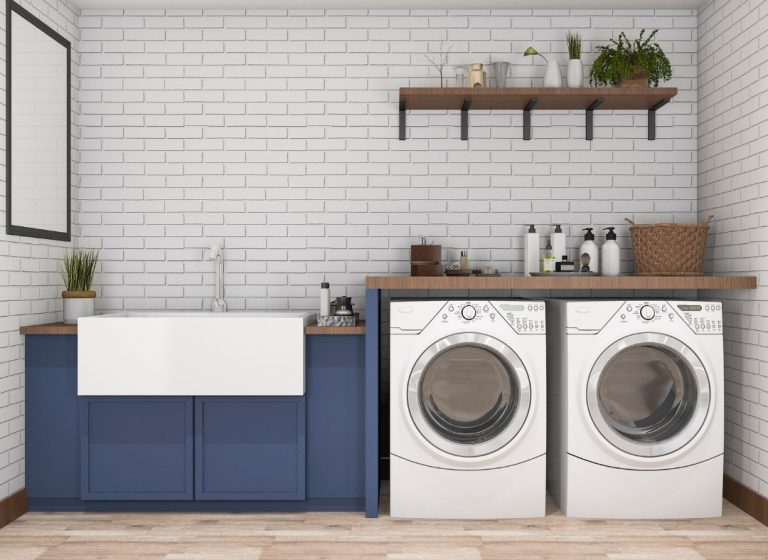Think about proximity to bedrooms and living areas
Placing your laundry room close to where laundry is generated makes sense. Many dirty clothes come from bedrooms. If you put it far away (for example, in the basement or remote wing), you’ll spend more time carrying loads. But if it’s too close to quiet spaces (like the master bedroom), noise and vibration can become a nuisance.
Check how utilities and ventilation line up
Your laundry room must have water inlets, a drain, electrical power, and a dryer vent that goes outside. If you locate it in a place where these are hard to bring in, costs rise and problems (like leaks, inadequate venting) increase. Also, placing the dryer near an exterior wall optimizes venting and airflow.
Account for noise and impact on other rooms
Washing machines spin, dryers hum, and both generate heat and vibration. If you place the laundry room adjacent to a living room, kitchen or bedroom, you may be disturbed. According to expert advice: don’t put large laundry machines too close to sleeping or entertainment areas unless you accept the trade-off.
Size, layout and access matter
Even with limited space, you want enough clearance for machines, folding counters, and storage. For example, side-by-side machines may need about 1.5 m (60 in) of width and about 85 cm (33 in) deep plus clearance. Also, access through doorways and halls must allow the appliance to be moved in/out.
Visibility and adjacent uses
Decide how hidden or visible you want your laundry room to be. If it’s near the front of the house or a guest area, you’ll probably want doors or a design that hides machines and piles of laundry. On the other hand, a room tucked away might reduce convenience for everyday use.
Consider extra functions and workflow
Think about whether the laundry room will purely wash and dry, or also serve as a folding area, pet-washing station, mudroom, or work area. If you want extra uses, you’ll need more space, better layout, and likely more natural light.
Planning for leaks, maintenance and safety
The laundry room deals with water, heat and lint build‐up. If it’s on an upper floor, a leak can cause damage below. Proper ventilation, drain pans or floor drains, and accessible hose connections matter. Unless you plan for these, a remote location can increase risk.
Your choice of where to put the laundry room should reflect how you live. If you’re up and down stairs a lot, a main-floor location near bedrooms or the kitchen may work. If you entertain often and want the machines out of view, a tucked away location might suit. But convenience, utility access and noise should drive your decision over aesthetics alone.


